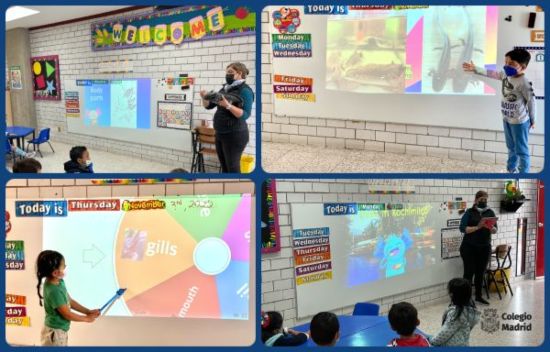Let’s preserve the axolotls! / ¡Preservemos a los ajolotes!

Let’s preserve the axolotls!
For some weeks, our pre-schoolers have been working on a particular project. They learned about the importance of axolotl’s preservation and how important it is to take care of their habitat.
In the Integrated Learning class, they learned the axolotls’ body parts and their main predators. They identified the colour, size, age, feeding and the natural habitat of this amphibian.
When our children visited the CIBAC (Centro de Investigaciones Biológicas y Acuícolas de Cuemanco), they met the axolotls, known locally as “water monsters”, who have a lovable appearance.
Nowadays, these animals are considered to be in danger of extinction. However, after having lived the experience and knowing more about them, our children are conscious and interested in taking care of them and preserving this Mexican species.
It is relevant to take immediate preservation and restoration actions to maintain the axolotl population in its natural habitat, as well as eco-friendly agriculture practices.

¡Preservemos a los ajolotes!
Durante algunas semanas, nuestros alumnos de preescolar estuvieron trabajando en un proyecto muy particular. Aprendieron sobre la preservación del ajolote y lo importante que es cuidar su hábitat.
En la clase de Integrated Learning, aprendieron las partes del cuerpo del ajolote y conocieron a sus principales depredadores. Identificaron su color, tamaño, edad, alimentación y el hábitat natural de este anfibio.
Cuando los niños visitaron el CIBAC (Centro de Investigaciones Biológicas y Acuícolas de Cuemanco), conocieron a los ajolotes, llamados localmente como “monstruos del agua”, quienes tienen una apariencia adorable.
Actualmente se considera a estos animales en peligro de extinción. Sin embargo, después de haber vivido la experiencia y conocer más acerca de ellos, nuestros pequeños están conscientes y se interesan por cuidarlos y preservar esta especie mexicana.
Es relevante tomar acciones inmediatas de conservación y restauración para mantener a la población de los ajolotes en su hábitat natural, así como prácticas de agricultura ecológicas.
Paola Martínez y Jaqueline Hernández
Integrated Learning – Inglés
Preescolar